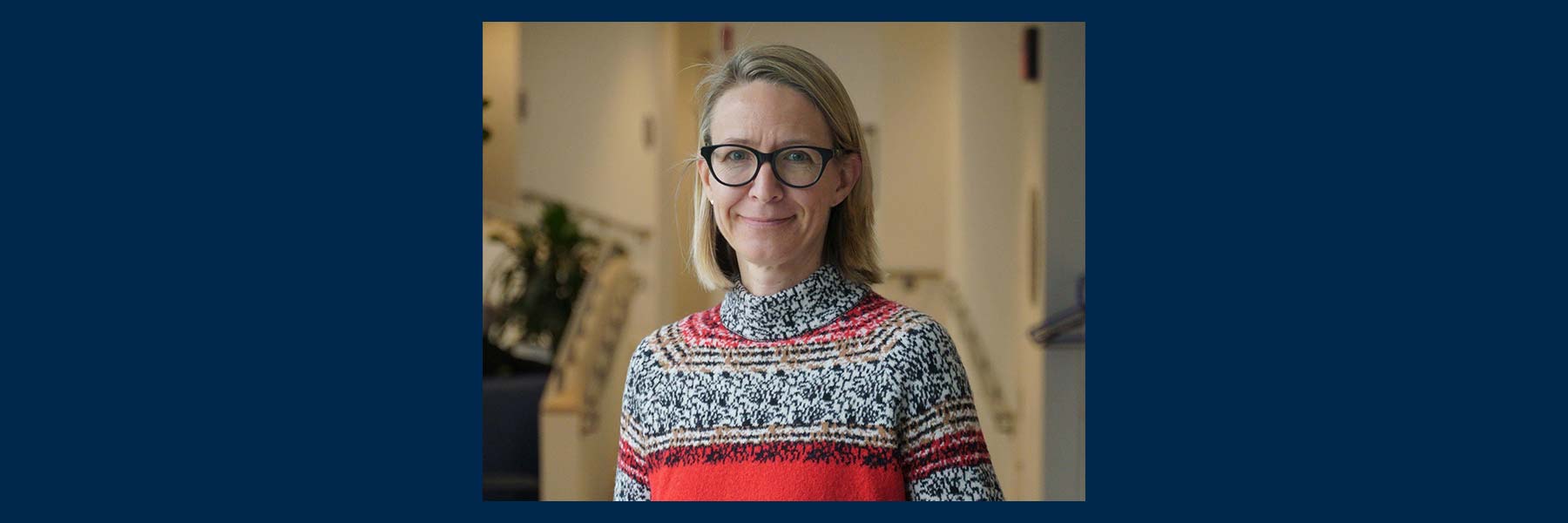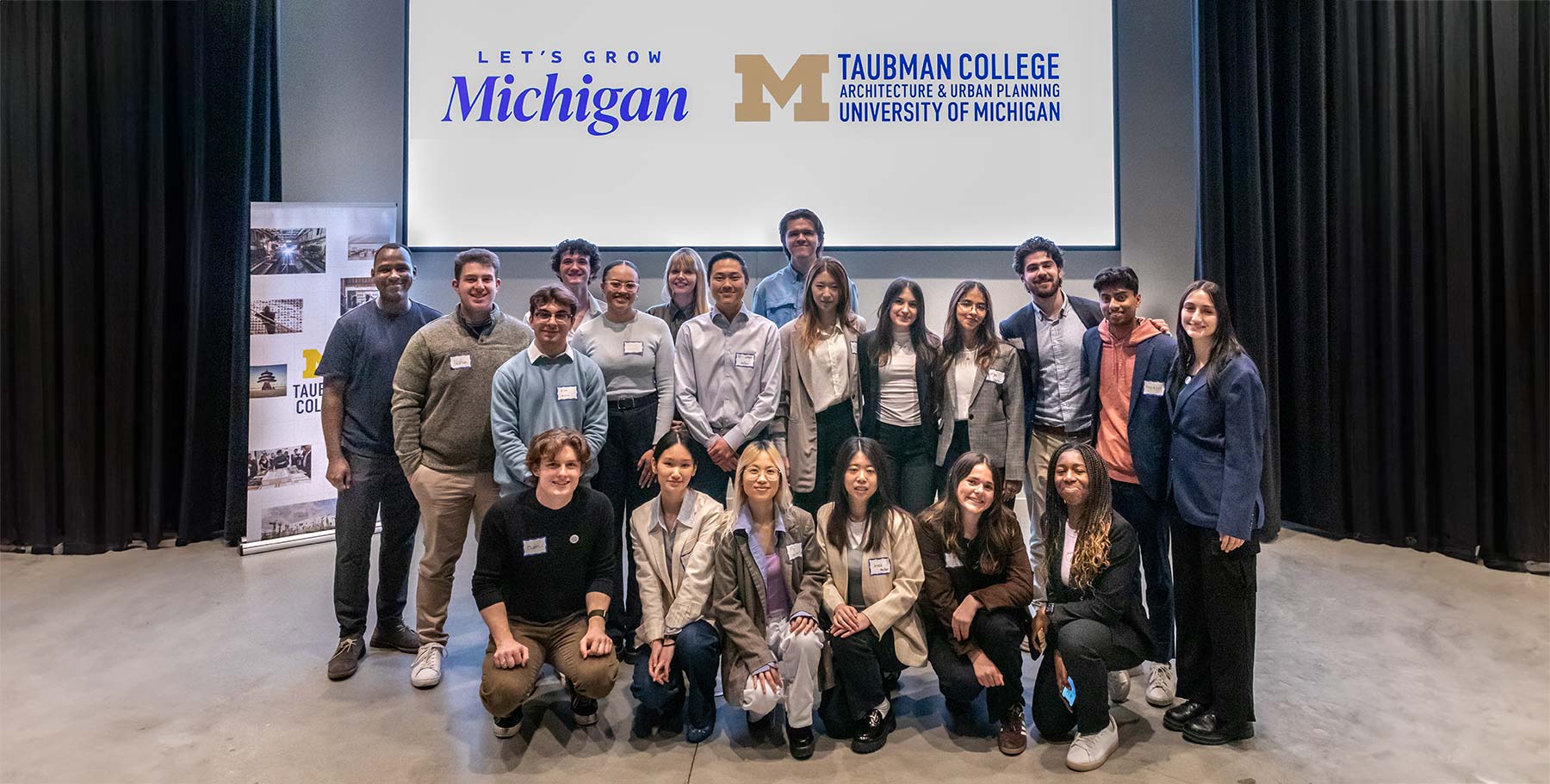After completing graduate school at the Massachusetts Institute of Technology, Stratton Coffman explored several different fellowship options at various architecture schools before entering the Taubman College Architecture Fellowship Program last fall. The two-year paid fellowship offered a perfect balance of research and teaching within a highly supportive, intellectually stimulating collegiate environment.
“I knew I wanted to work somewhere between academia and practice,” Coffman says. “I’ve always been excited about making things with my hands, and I wanted to experiment with different, non-standard techniques of production.
“I’ve also enjoyed thinking about the history and consequences of what we make as designers, and I felt teaching would offer another way to think critically about these issues in collaboration with my students. This fellowship allows me to do both.”
For Coffman, teaching undergraduate and graduate architectural design studios for the first time has proven somewhat challenging, but also rewarding. “There are moments when you see changes in the way students approach problems and talk about possible alternatives,” Coffman says. “That’s so exciting, and it begins to affect how I see things. I’ve learned a lot about the nuts and bolts of teaching, and I have developed curricular content I can draw on in the future.”
At the same time, Coffman has introduced students to innovative ideas and alternative perspectives. For example, in a winter-term seminar, titled “Other Fits,” students were encouraged to examine critically how standards and norms are used in architecture to perpetuate a specific, narrow definition of the human beings who inhabit and use architectural structures.
The seminar also provided inspiration for Coffman’s fellowship exhibition next fall, which will lay the groundwork for building a body of work within the collegiate community. “Having this moment to test out different ideas, get feedback from my peers, and produce a fellowship project that I can continue to build on in different contexts and with different collaborators beyond the extent of the fellowship itself ― that’s really powerful,” Coffman says.
Bellwether of Cultural Changes
More than 100 fellows have completed the Taubman College Fellowship Program since it began nearly four decades ago, in 1984. The influence of this elite network radiates across the U.S. and around the world. To date, approximately 20 former fellows have remained at Taubman College, where they are now permanent faculty members.
“What makes our program unique is the amount of intellectual space and research support we give fellows to do their work once they are here,” says Professor McLain Clutter, chair of the architecture, who makes the final decision on selecting two new architecture fellows annually from the group of finalists vetted by a faculty committee.
“Fellows often come into the program with a lot of talent and new ideas, but sometimes without a lot of teaching experience,” he explains. “Therefore, we provide a great deal of mentorship for their teaching, and fellows often teach alongside more-senior faculty to learn their teaching methods.”
The fellowship program serves as a conduit for innovation and a bellwether of cultural changes occurring in the architectural industry, according to Clutter. “We use the fellowships to bring in young people who represent the threshold of architectural thinking ― and to probe what the future may be ― rather than to fill holes or gaps we’ve identified,” he remarks. “The fellows act as ‘leaders from the rear,’ and their ideas indirectly impact both our curriculum and teaching methods.”
Students not only benefit from the injection of new thinking but also the different kind of mentorship they receive from fellows. As intermediary figures, fellows often seem more approachable to students, who can develop other types of educational and professional relationships with them.
“The fellowship program is one of our favorite programs at Taubman College, and there is a kind of celebration around it,” Clutter says. “This distinguishes us from other architecture colleges.”
Formative Building Block
The Taubman College Fellowship Program served as a stepping stone to a full-time teaching position for Ashley Bigham. In 2015, she had just finished a one-year Fulbright Research Fellowship at the Center for Urban History of East Central Europe in Lviv, Ukraine, and was looking for new opportunities in the U.S. that combined teaching and research. Bigham applied to the fellowship program at Taubman College and was accepted for a one-year fellowship.
“It seemed like a good way to see if I liked teaching as a potential career path,” says Bigham, who initially taught undergraduate studios and co-taught a design fundamentals course. “It was the first time I was able to write my own studio syllabus and come up with new assignments.”
The fellowship also gave Bigham the time and resources to leverage the research she had conducted in Ukraine, which focused on defensive architecture during the Maidan protest movement nine years ago. This research was an important step in establishing her credentials as a candidate for a future tenure-track position.
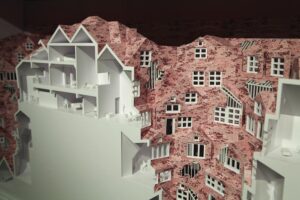
“Safety Not Guaranteed” by Ashley Bigham
Bigham’s fellowship project, titled “Safety Not Guaranteed,” examined the defensive tendencies built into the architecture of American suburban housing developments. “I looked at how the American suburbs exclude people, and at the social issues associated with these exclusionary practices,” she says. “Some defensive features such as gated communities have become so commonplace that we overlook their harm.” At the end of her year-long fellowship, Bigham took a group of Taubman College students to Poland and Ukraine to introduce them to the unique architecture in the two countries.
“I exposed the students to a part of the world they had never visited and to architecture they had never considered learning about,” she says. “One student later wrote to me, saying how grateful he was to have been able to visit Ukraine before the most recent invasion.”
Bigham continued as a full-time lecturer at Taubman College for two additional years to gain more teaching experience. “There was a great community of colleagues at the college that I could learn from,” she says. “They really pushed me and exposed me to new ways of thinking about architecture. Their influence had a huge impact on my research and teaching.”
In 2018, Bigham took a new teaching position as an assistant professor at Ohio State University’s Knowlton School of Architecture. In retrospect, she considers her fellowship experience at Taubman College as a formative building block in her career. “I always recommend that people go ahead and apply for a fellowship, because you never know where it will lead,” she says.
-

“Practice, Product, Protocol” by Jacob Comerci
-

“Free Dirt” by Leah Wulfman
-
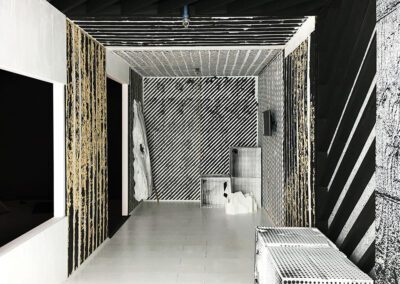
“BLDG_DRWG” by Cyrus Peñarroyo
-
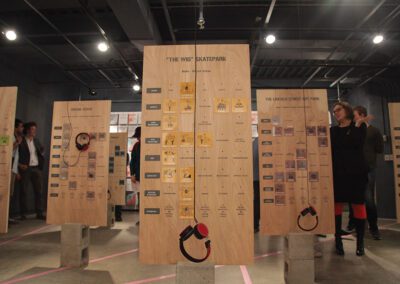
“Place Holders” by Ana Morcillo Pallarés
Portico: Spring 2023
- Visualizing the Future
- Beth Gibbons, M.U.P. ’12, and Izzy Beshouri, M.U.R.P. ’24, Know There’s No Time to Waste When It Comes to Climate Adaptation
- Vince Hoenigman, M.U.R.P. ’94, Sees the Opportunity in Every Problem
- Architecture Fellowship Program: A Conduit for Innovation Since 1984
- Collective for Equitable Housing Explores Solutions to Growing Affordable Housing Crisis
- Taubman College Students Recognize the Power of Radical Planning
- David Lepo, M.U.P. ’78, Gives Because of the Lasting Impact of His Taubman College Education
- Kristen Padavic, B.S. Arch ’98, Draws Connections
- Help Taubman College Build Tomorrow: Dylan Vaughn-Jansen’s Story


